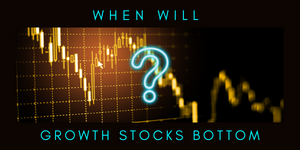The macro-outlook sure is tough. Between sticky inflation, a hawkish Fed, slowing growth, fresh China lockdowns, Europe’s recession and a soaring dollar, economic visibility doesn’t get much worse than this!
It’s no surprise growth stocks have cooled off as safer, dividend paying stocks outperform. That’s bad news for the tech-heavy S&P 500. So, many are wondering, when will growth stocks bottom?




